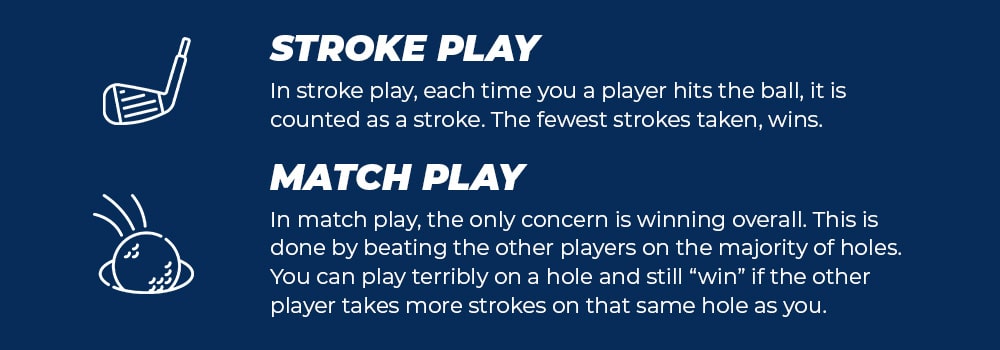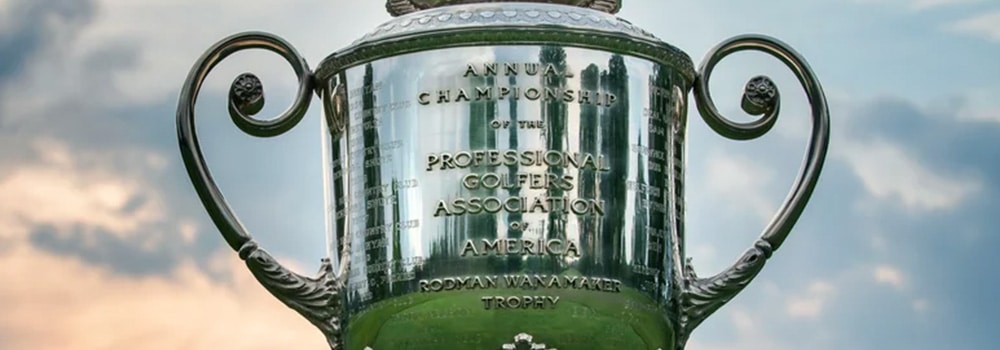Golf, a sport steeped in tradition and elegance, captivates fans worldwide with its displays of skill, strategy, and sheer determination. Among the premier events in the golfing calendar, the PGA Championship stands tall as a testament to the pursuit of excellence. What makes the PGA Championship different than the rest of the events?
1. The History
The tournament’s rich history spans over a century, making it one of the oldest and most esteemed golfing events. It originated from the efforts of professional golfers to establish a championship solely for professionals, setting it apart from the U.S. Open, which includes both professionals and amateurs. The PGA Championship has undergone several changes in format throughout its history. Initially played as a match-play event, it transitioned to a stroke-play format in 1958.
2. The Benefits
The winner of the PGA Championship earns automatic entry into the other three major championships for the next several years. This includes coveted spots in The Masters, the U.S. Open, and The Open Championship. Securing a place in these prestigious tournaments ensures continued exposure, increased opportunities, and the chance to compete against the world’s best players.
3. The Tournament
As mentioned before, the PGA Championship went through a format change in the late 1950s from Match Play to Stroke Play. Match play is a format in which golfers play head-to-head against each other, with the winner of each match advancing to the next round. In match play, the golfer who wins the most holes during the match wins the game. Unlike stroke play, match play focuses on the individual holes, with the player with the lowest score on a hole winning that hole. Stroke play is the most common format in professional golf tournaments, including PGA Tour events. In stroke play, every golfer plays against the course and the field, with the winner being the player with the lowest number of strokes over the entire tournament. The player with the lowest total score after all rounds is declared the winner. Most PGA Tour events use stroke play, and the total number of strokes is typically between 72 and 144. The winner of the tournament is awarded the first-place prize, while the remaining players are ranked according to their scores.
4. The Lack of Amateurs
By excluding amateurs, the PGA Championship aims to ensure a level playing field for professional competitors. Amateurs generally do not have the same level of tournament experience, resources, and training as professionals. Including amateurs could potentially disrupt the balance of the competition and dilute the quality of play. The PGA Championship serves as a stepping stone for professional golfers to elevate their careers. Winning or performing well in the tournament can lead to increased opportunities, sponsorships, and invitations to other prestigious events. By focusing on professionals, the tournament helps cultivate and promote the growth of professional golf and its players.
5. The Payout
This year’s total payout for the PGA Championship is a $15,000,000 purse. As compared to the first PGA Championship in 1916, of $3,000. Adjusted for inflation, the $3,000 in 1916 is worth around $80,494.40 worth of purchasing power. An increase of 2,683.15% over the 107 year history is nothing to balk at. Keep in mind, that total $3,000 purse was divided amongst the entire winnings-eligible field. For reference, minimum wage in 1916 was $0.16 an hour. That would mean an annual salary at 40 hours a week BEFORE taxes would have been sitting at $332.80. So what may seen like pennies now in comparison to the winnings then, the impact over a entire year’s wages for the everyday person was just as astronomical as some of these take home prizes 107 years later.
6. The Trophy
The Wanamaker Trophy is one of golf’s most prestigious and iconic trophies, awarded annually to the winner of the PGA Championship. Named after Rodman Wanamaker, a department store magnate who played a significant role in the establishment of the PGA of America, the trophy holds historical significance and represents the pinnacle of achievement in professional golf.
The idea for creating a trophy specifically for the PGA Championship came about in the early 1910s. At that time, the tournament was still in its infancy, and the sport of golf was gaining popularity in the United States. Rodman Wanamaker, an avid golfer and influential figure in the retail industry, recognized the need for a distinguished trophy to symbolize the championship and its growing significance.
Wanamaker’s vision came to fruition in 1916 when he presented the newly designed trophy to the PGA of America. It was crafted from sterling silver and was designed to represent elegance, prestige, and the spirit of competition. It stands at almost two feet tall and weighs around 27 pounds, making it an impressive symbol of achievement in the golfing world.
Over the years, the trophy has been passed down to legendary golfers who have etched their names in golfing history. Past winners of the Wanamaker Trophy include golfing greats like Walter Hagen, Jack Nicklaus, Tiger Woods, Phil Mickelson, and Brooks Koepka, among others. It is debated as how long it takes to engrave the winner’s name, but arguments have been made for less than a 15 minute window from the final putt dropping to the player being handed their personalized addition to the trophy’s legacy.
7. The Qualifying
Overall, qualifying for the PGA Championship is a combination of earning exemptions based on past success, rankings, and performance in other tournaments, as well as participating in specific qualifying events organized by the PGA of America. The ultimate goal is to assemble a field of the most accomplished and competitive golfers, ensuring a thrilling and prestigious championship.
Past Champions: The PGA Championship offers lifetime exemptions to previous winners of the tournament. Champions are typically granted an automatic entry into the championship for a specified number of years following their victory.
Top Finishers from Previous PGA Championships: Golfers who have finished among the top performers in recent editions of the PGA Championship are often granted exemptions into future tournaments. This allows them to secure a spot in the field based on their past success.
Performance in Other Major Championships: Exceptional performances in other major championships, such as The Masters, the U.S. Open, and The Open Championship, can also provide players with entry into the PGA Championship. This pathway recognizes the consistency and skill of golfers in major tournaments.
Special Invitations: The PGA of America has the discretion to extend special invitations to certain golfers who may not have qualified through the above methods. These invitations are typically offered to individuals who have made significant contributions to the game of golf or have notable achievements that warrant their inclusion in the tournament.
8. The Winners
It is always good company when you are in the ranks of Tiger, Jack, Walter, Rory and Gene, however the frequency of some of these winners is what is truly baffling. The United States has dominated the event with 89 of the events being taken home by a group of 59 of the best golfers the game has ever seen. The second closest country to the US would be Australia with 5 events with as many different winners. A single winner from eight other countries have risen the ranks, with 5 of those eight repeating one other time.
9. The Records
The PGA Championship has witnessed numerous outstanding performances throughout its history. Selecting the top five is subjective, but here are five performances that are widely regarded as some of the best in the tournament’s history:
Jason Day – 2015 PGA Championship: Jason Day’s victory at the 2015 PGA Championship at Whistling Straits is considered one of the most dominant performances in the tournament’s history. Day finished with a record-breaking score of 20-under-par, winning by three strokes. His performance included a stunning third round of 63, becoming the first player in major championship history to reach 20-under-par.
Tiger Woods – 2000 PGA Championship: Tiger Woods’ performance at the 2000 PGA Championship at Valhalla Golf Club is often cited as one of the greatest displays of golf ever witnessed. Woods battled Bob May in an intense duel, with both players finishing tied at 18-under-par after 72 holes. Woods eventually won in a three-hole playoff, showcasing his incredible skill and mental toughness.
Rory McIlroy – 2014 PGA Championship: Rory McIlroy’s victory at the 2014 PGA Championship at Valhalla Golf Club was a display of sheer dominance. McIlroy won by one stroke, finishing at 16-under-par. His performance was highlighted by a second-round 67 and a final-round 68 under challenging conditions. McIlroy’s win solidified his status as one of golf’s brightest talents.
Jack Nicklaus – 1980 PGA Championship: Jack Nicklaus’ victory at the 1980 PGA Championship at Oak Hill Country Club is regarded as one of his most memorable performances. At the age of 40, Nicklaus became the oldest winner of the PGA Championship, finishing at 6-under-par. His final round of 66, which included a back-nine 30, propelled him to a record-tying fifth PGA Championship title.
Phil Mickelson – 2005 PGA Championship: Phil Mickelson’s victory at the 2005 PGA Championship at Baltusrol Golf Club is remembered for his remarkable final-hole birdie. With the tournament on the line, Mickelson hit a memorable approach shot from the rough to within inches of the hole, securing a one-shot victory. The win marked Mickelson’s second major championship triumph and showcased his flair for the dramatic.
10. The Course
Oak Hill Country Club is located in Pittsford, New York, just outside of Rochester. It is a historic and renowned golf course that has hosted numerous major championships, including the PGA Championship, U.S. Open, and Ryder Cup.
The East Course at Oak Hill, designed by Donald Ross, is the primary course used for championship events. It is known for its classic layout and challenging design. Here are some key features you can expect to find at Oak Hill:
The East Course at Oak Hill is a par-70 course, meaning it has two fewer par-5 holes compared to a traditional par-72 course.
Oak Hill’s East Course is characterized by narrow, tree-lined fairways that demand accuracy off the tee. Straying too far from the fairway can lead to challenging approach shots from the rough or tree trouble.
The course features well-placed bunkers that come into play on both fairways and around the greens. These bunkers often require strategic shot placement to avoid trouble and navigate the course effectively.
Oak Hill is known for its challenging and undulating greens. The greens can be fast and tricky to read, placing a premium on solid putting and approach shots to set up birdie opportunities.
The 13th hole, a par 3 known as the “Hill of Fame,” requires a precise tee shot over a deep valley to a green guarded by bunkers. The 17th hole, a demanding par 4, often plays a pivotal role in the outcome of tournaments held at Oak Hill.
Final Take
There is something to be said about the energy a major brings. Will the stars show up? Will all eyes be on the final group on Sunday? Or will someone run away with it? No matter what transpires this week at Oak Hill, the inevitable outcome will be a ball dropping in the cup, an engraver’s tool buzzing at lightening speed, and 27 pound department-store tycoon’s contribution to the world’s most humbling sport being hoisted above someone’s head, as they solidify their presence in the golfing world for years to come.




